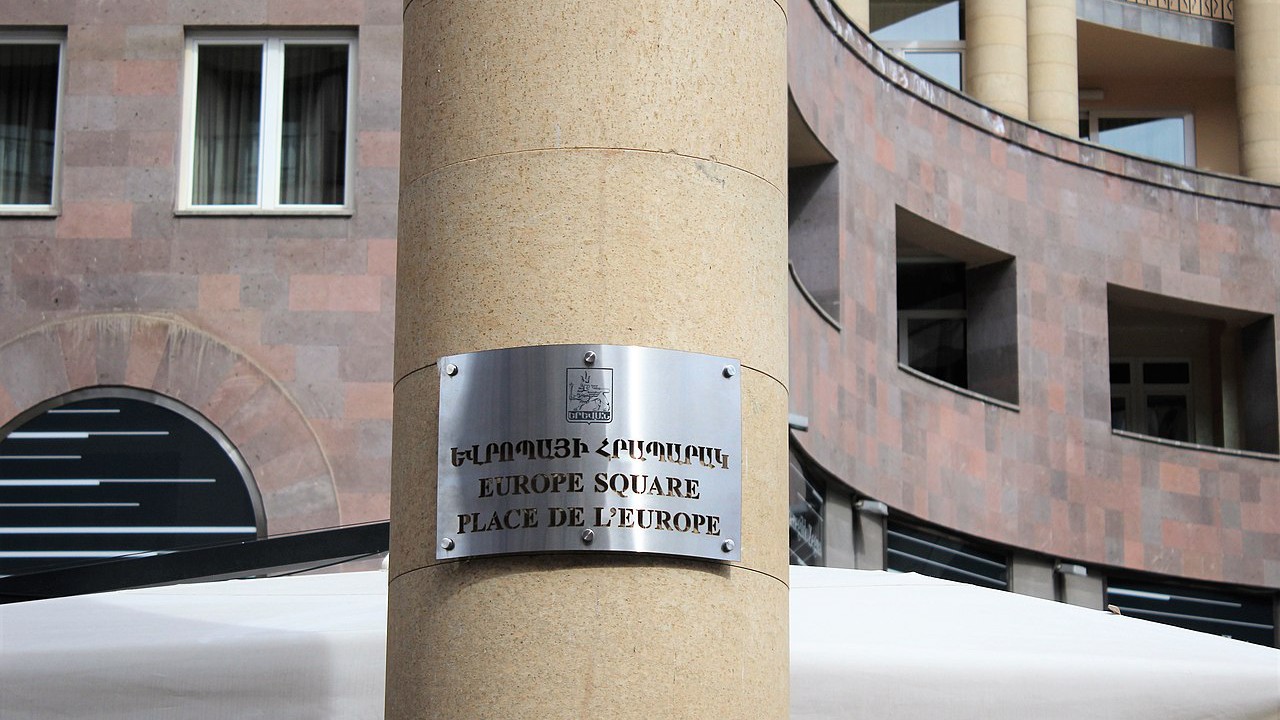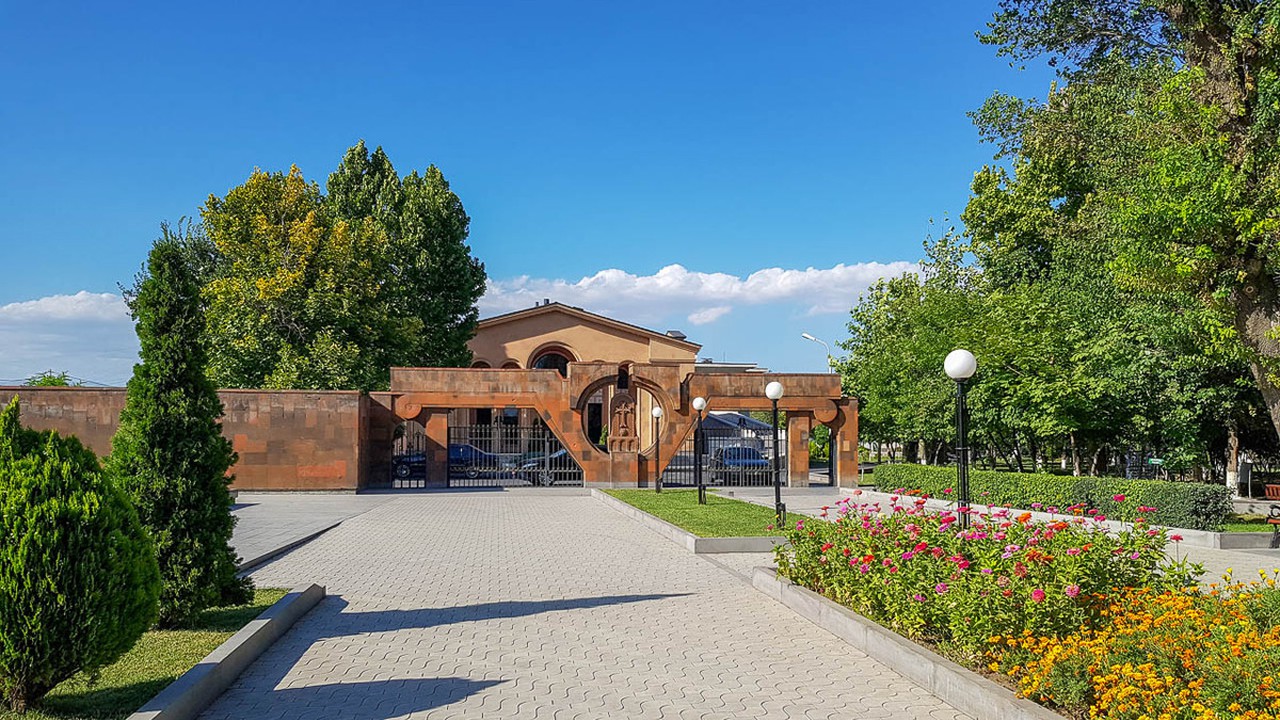SQUARES AND PARKS

CHARLES AZNAVOUR SQUARE (“MOSCOW” CINEMA ADJACENT SQUARE)
1924-1926, 1933
State
index: 1.6.178.3
The square adjacent to the “Moscow” cinema has historically formed as a result of the development of Abovyan Street (formerly Astafyan). St. Paul and Peter Church and the Persian Zalkhan Mosque (1649, reconstructed in 1687) were located here. The church was built in 1679 to replace the same-named temple destroyed during the great earthquake in the Ararat Valley and was demolished in the 1930s.
It is one of the first squares in Yerevan and was marked in Yerevan's
1924 master plan (architect: Alexander Tamanyan).
The square has a semi-circular shape, entirely located on the left side
of Abovyan Street. It is formed by two semi-circular buildings: the “Moscow”
cinema (in a mixed style of Armenian functionalism and classicism architectural
elements) and the “Intourist” hotel (in neoclassical style).
In 1926-1928, the “Intourist” hotel (later “Yerevan”, now “Golden Tulip
Grand Hotel”) was built in the square according to architect Nikolaos
Buniatyan's design. In 1933-1936, the two-hall “Moscow” cinema was built
(winter hall, architects: Tiran Yerkanyan, Gevorg Kochar). From 1933 to 1950,
the statue of Khachatur Abovyan brought from Paris was placed here (sculptor:
Andreas Ter-Marukyan, 1913), which was later moved to other locations and in
1964 was erected in the yard of the writer's house-museum in Kanaker. In 1959,
the Artists' House with an exhibition hall was annexed to the “Yerevan” hotel
(architect: Rafael Israelyan). In 1966, the summer hall of the “Moscow” cinema
was built behind the winter hall (architects: Spartak Kntekhtsyan, Telman
Gevorgyan), for which the authors were awarded the Alexander Tamanyan Prize
(1967).
In 1966, a decorative pool with a mosaic was built in the center of the
square (architect: Arsen Melikyan, artist: O. Khachatryan). On November 20,
1984, the fountain of the pool was put into operation, with 12 zodiac signs
symbolizing the constellations (architect: Arsen Melikyan, artist: Vladimir
Atanyan).
Tuff, basalt, glass, plaster, and reinforced concrete are used in the architecture of the square. In 1970, it was faced with yellow felsite.
“Scientific Research Centre of Historical and Cultural Heritage” SNCO
Yerevan Municipality




